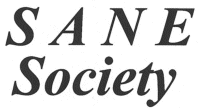
INSANE MONEY
by Aart Roukens de Lange
In the search for quick speculative gains, trillions of dollars are rushing around the globe at the touch of a few keys of a computer keyboard. These are phantom dollars - gambling chips not backed by real investment or value added to the economy. Flows of such money is up to 50 times greater than money associated with real trade and services. Banks, bankers and the economy's 'money masters' grow richer while the labour of the producers of true value is underpaid and underutilised.
Interest, output and money-creation
Interest is used as a blunt tool to stimulate or cool down the economy, or to ward off the speculative attacks on the economy. This interest, which bears no relationship to increase in real value or growth, gives rise to inflation. Money is created by banks but real production is not increased. Net interest is paid by the poor to the rich. Meanwhile inflation saps the buying power of the nation as a whole.
Where does all this money come from? It is not simply printed by national governments. The days of hyper-inflation caused by money running off the printing presses are now history (we hope). No, these days money is created by banks when they make loans. Money is created to buy goods and services which are increasingly easy to produce as a result of labour-saving technology. But in the process of saving labour, spending power is decreased, particularly in the hands of the poor, the less-developed nations, and the increasing numbers of unemployed.
The process is fuelled by the system of fractional reserve banking. In this system every unit of money borrowed can be used by banks to generate new money determined by the reserve ratio (the amount of money which may be lent by banks for every unit of money deposited). If this ratio is 10, the amount of money created by banks is 10 times the amount deposited. This debt-generated money supply is far greater than that generated through national budget deficits. It sets in motion a vicious source of money associated with interest payments which impoverishes the poor, enriches the rich and ultimately strangles the entire economy in a vicious and unstable cycle of economic disintegration.
Money generated by the process of debt financing can be seen as a modern form of enslavement to the money masters of the planet. It forces people and societies to run ever faster to maintain a diabolical growth process which ultimately destroys people, countries and the planet.
With the help of modern technology it is easy to produce enough for all, but there is not enough money in the hands of the poor for the products to be bought. The solution could be the creation of money through the process of providing a citizen's income for all while limiting the power of the banks to generate money by reducing the reserve ratio.This process is described extensively and masterfully by Michael Rowbotham in his book The Grip of Death reviewed in this issue of SANE Society.